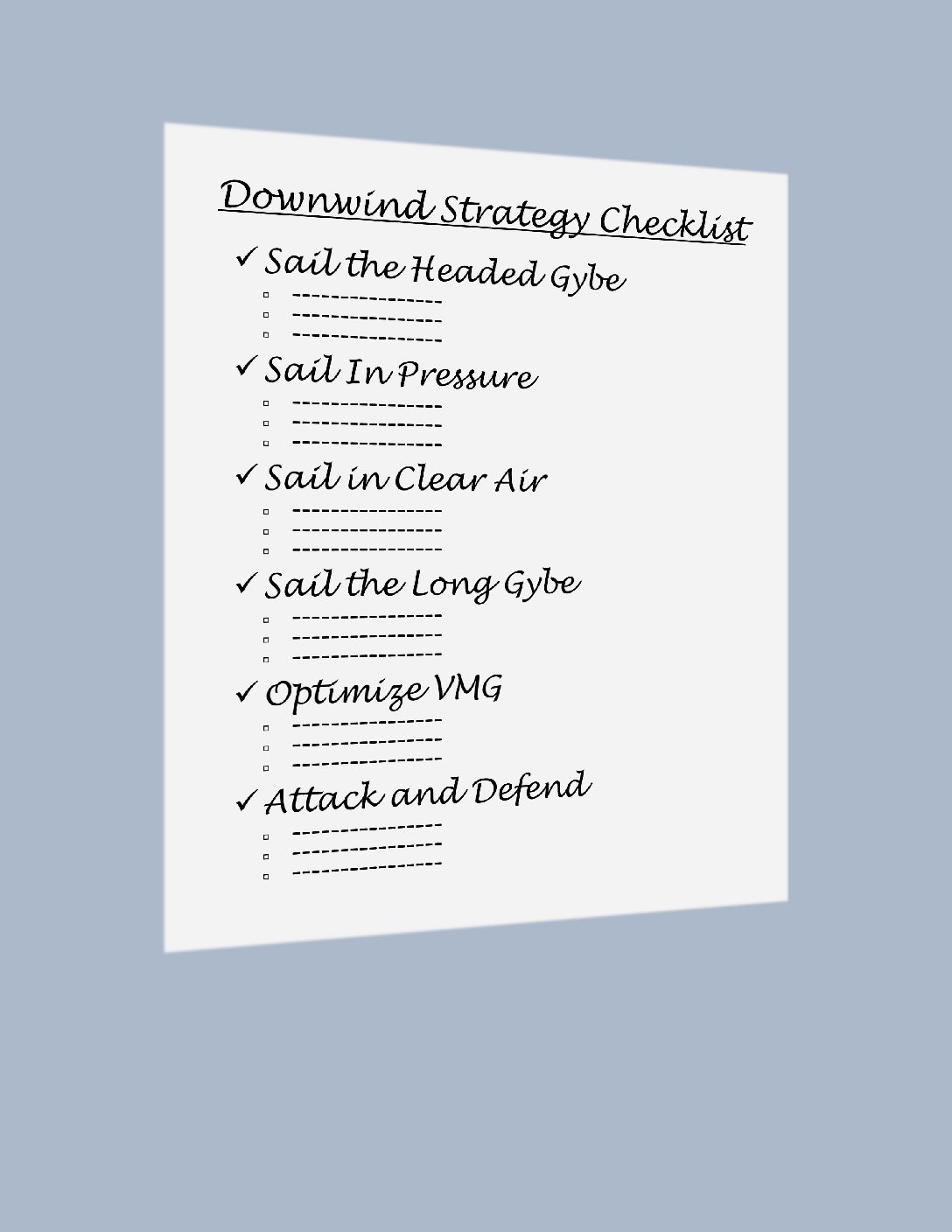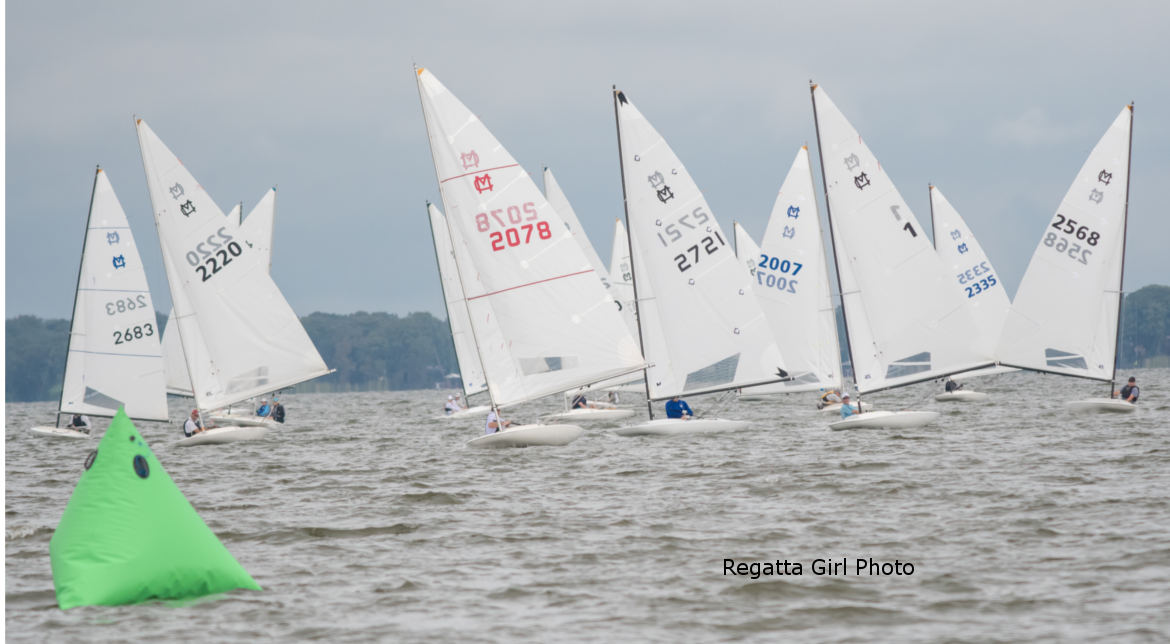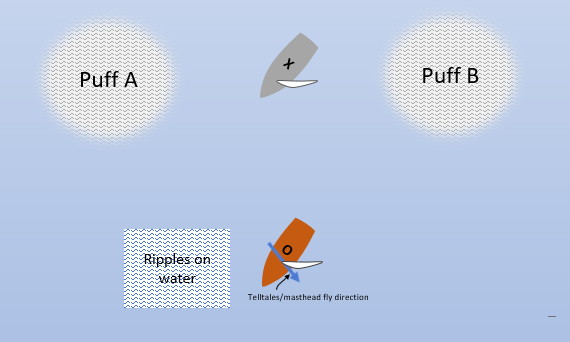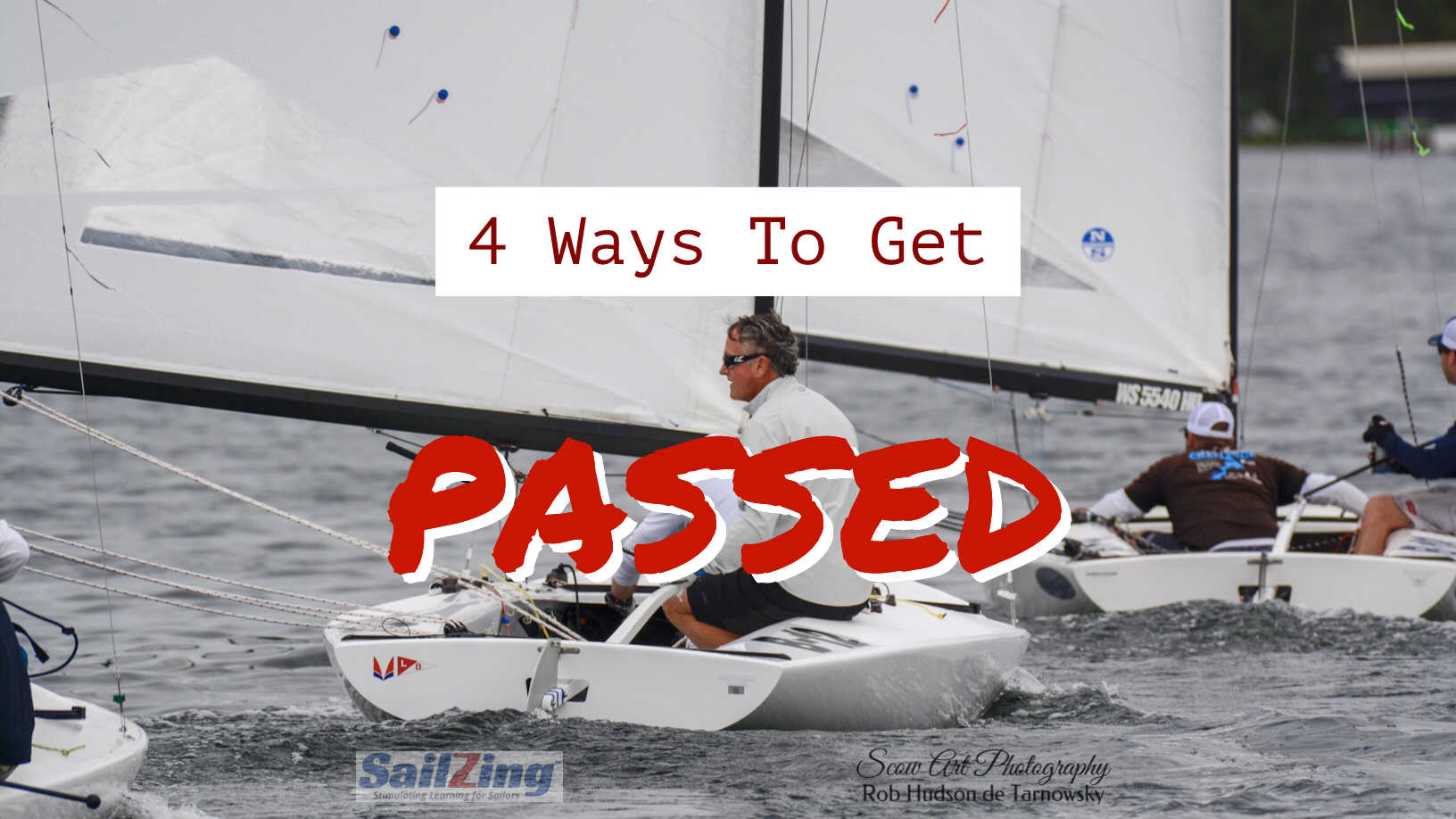We’ve written in detail about various aspects of downwind strategy, but many readers like content summarized. In this post we present a downwind strategy checklist, collected from previous SailZing.com content.
These skills are not difficult, but all sailors can execute them more precisely and consistently. If you recognize areas for improvement, go back and read the source materials.
This checklist covers strategy for much of the downwind leg but does not include the exit from the windward mark or the approach to the leeward mark. See our posts on Windward Mark Checklist and Leeward Mark Checklist for these topics.
Sail in clear air
- Key priority near marks, or when wind is steady, or in light air.
- Use your apparent wind to check.
- See Downwind Strategy: Use Apparent Wind Clues for more.
Sail in pressure
- Key priority in light and medium air.
- Get to the first puff after the exit.
- If one side has more wind, get there first.
- In puffy air, sail to the puffs.
- Sail by the lee if needed.
- Stay in puffs longer by bearing off when the puff hits.
- See Downwind Boat Speed Checklist and Sail Faster Downwind: in Pressure and By the Lee for more.
Sail the headed gybe
- Use your telltales or wind vane to determine which gybe is headed.
- When the wind shifts, don’t wait to get on the headed gybe.
- See Play the Shifts Downwind for more.
Sail the long gybe
- The long gybe points you closest to the mark. As you approach the edges of the course, the long gybe may be different from the headed gybe.
- Key priority when:
- Course is skewed.
- Wind is steady.
- Need to stay centered to manage risk.
- See Sail the Long Tack for more. The same reasons apply to the long tack (upwind) and the long gybe (downwind).
Optimize VMG
- Know your boat’s optimal sailing angle for various wind speeds.
- Sail higher in lulls to maintain VMG.
- Sail lower in puffs after building speed.
- Learn to feel the pressure in the sheets for clues.
- See Velocity Made Good (VMG) for the basics and Downwind Boat Speed Checklist for more.
- Plan for extended lulls or puffs.
- Fudge low before the lull, then sail higher in the extended lull.
- Fudge high before the puff, then sail lower in the extended puff.
- In absence of other factors, don’t gybe until you reach the layline to the leeward mark.
Attack and defend
- Use your wind shadow to attack boats ahead.
- Defend against boats behind.
- Stay in clear air; adjust heading or gybe if a boat threatens.
- Before gybing, ensure you will remain in clear air, even if they gybe.
- See Downwind Tactics with Roble/Shea Sailing for more about “avoiding the jump.”
- Don’t let someone roll over you to windward.
- Use a high lane to pass. See From the Archives: In the Passing Lane – Sailing World for more.
Related Content
Ten Ways to Use Shroud Telltales – several tips apply to downwind sailing.
Downwind Tactics for Youth with Roble / Shea Sailing – good overview of strategy
Downwind Strategy Mistakes and Downwind Strategy Mistakes Part 2 – eight common mistakes





